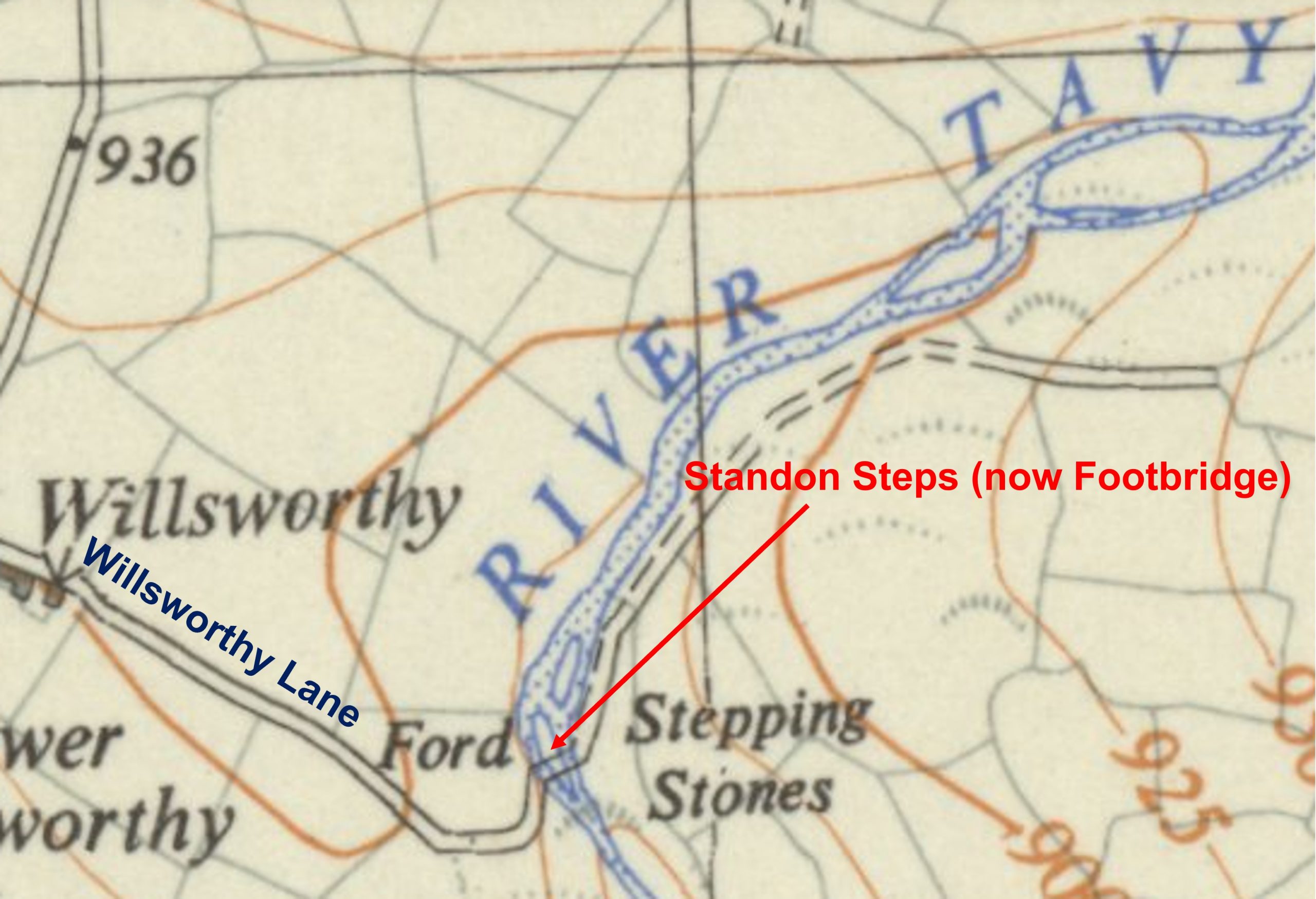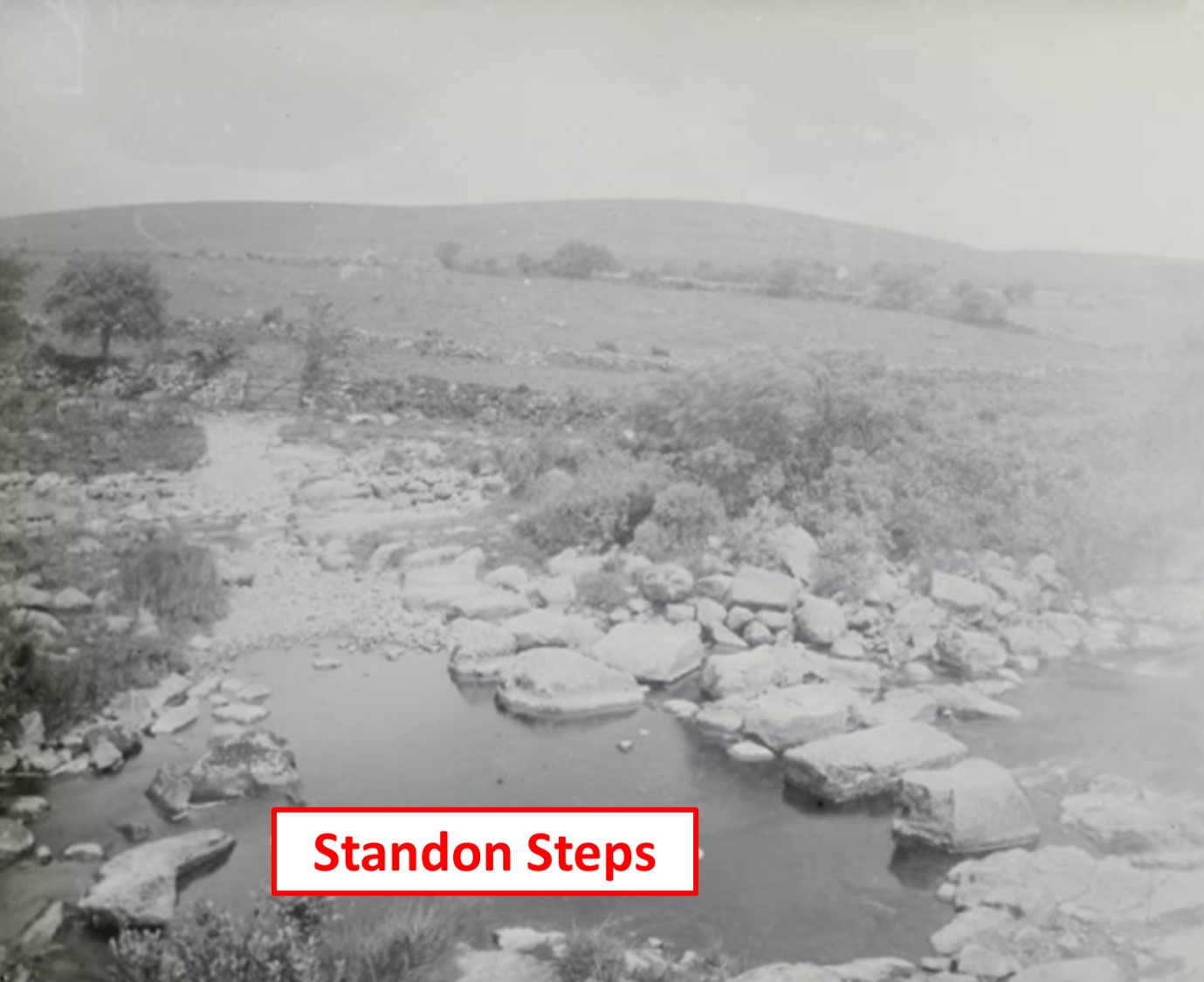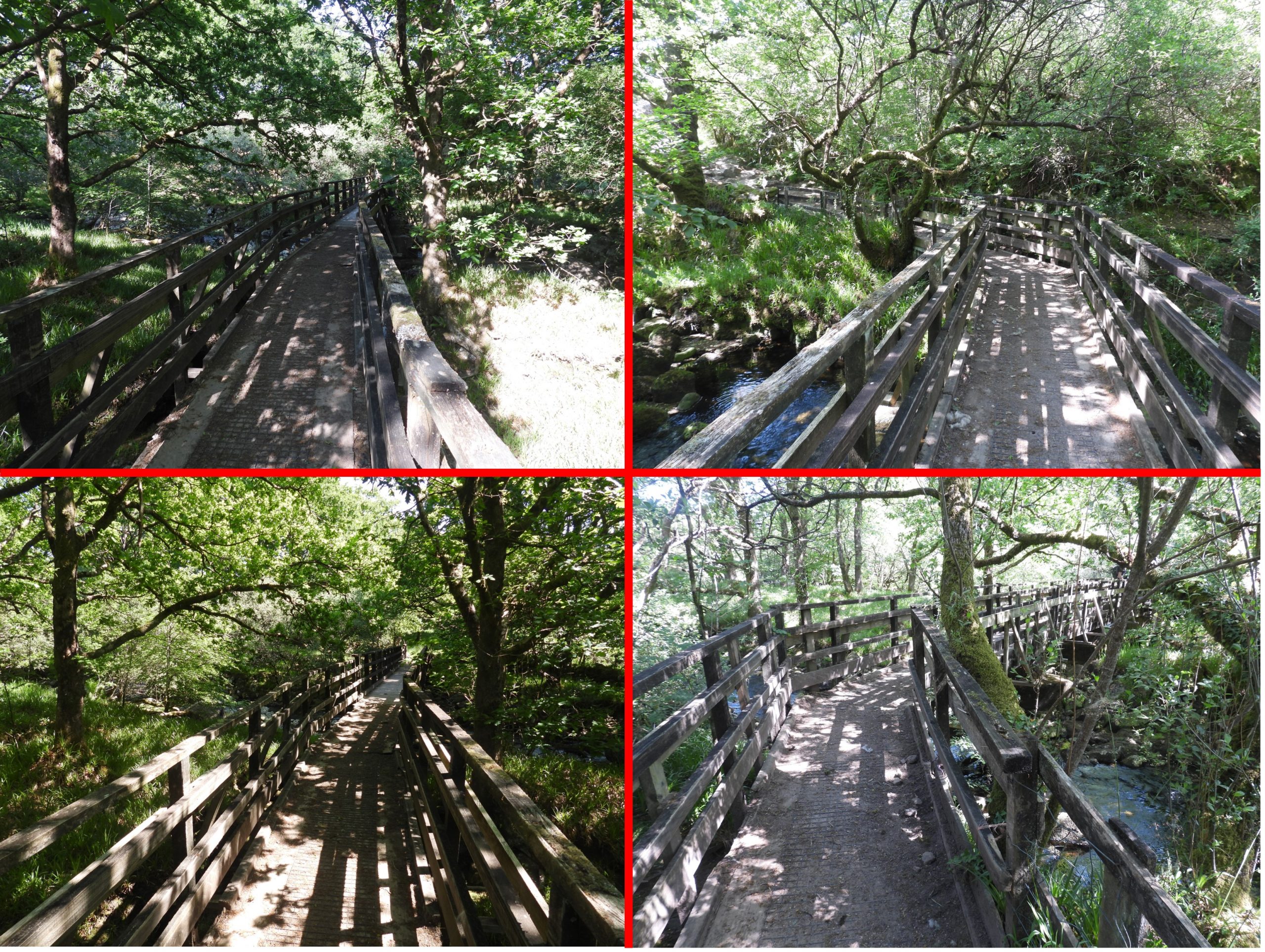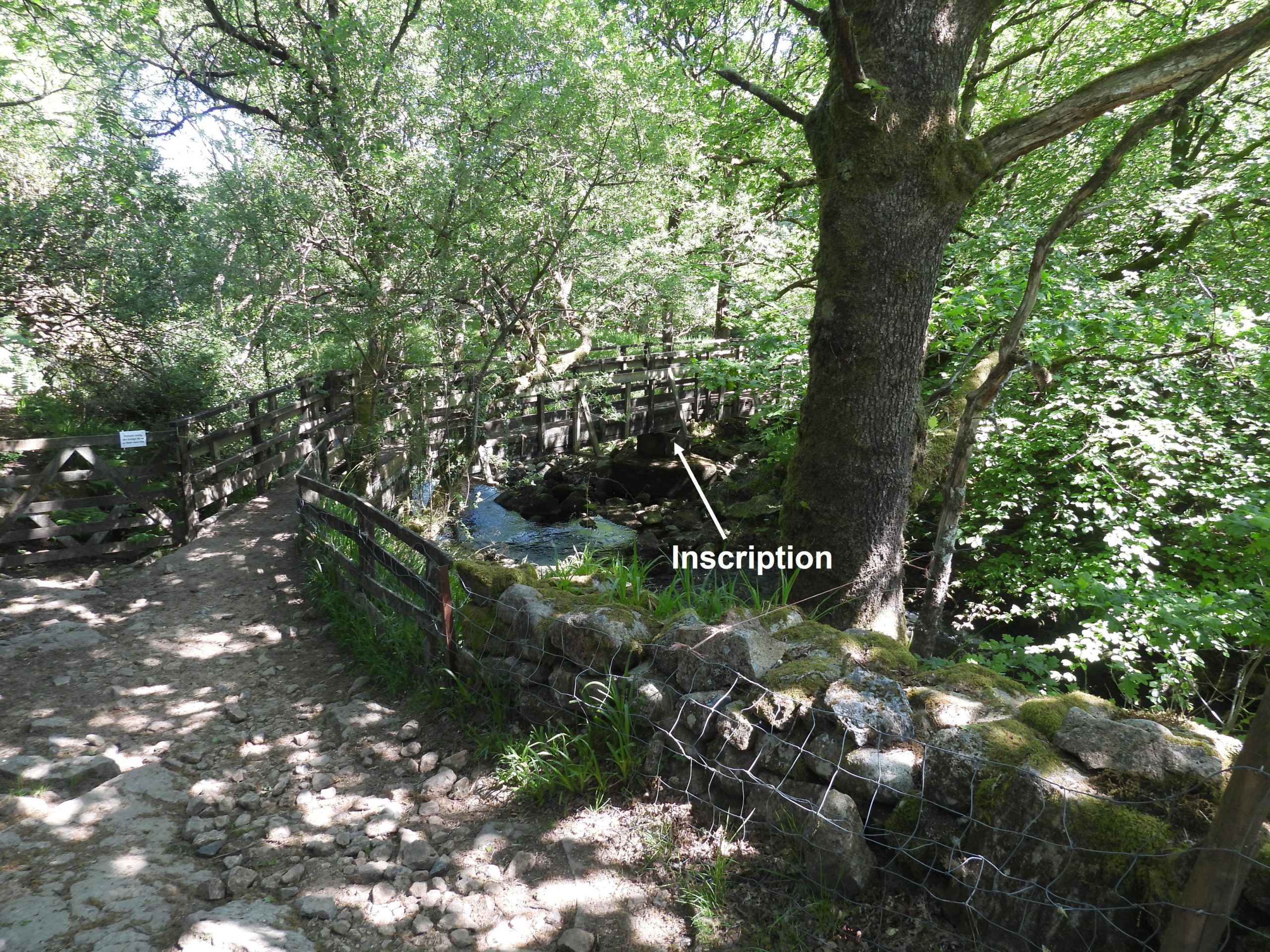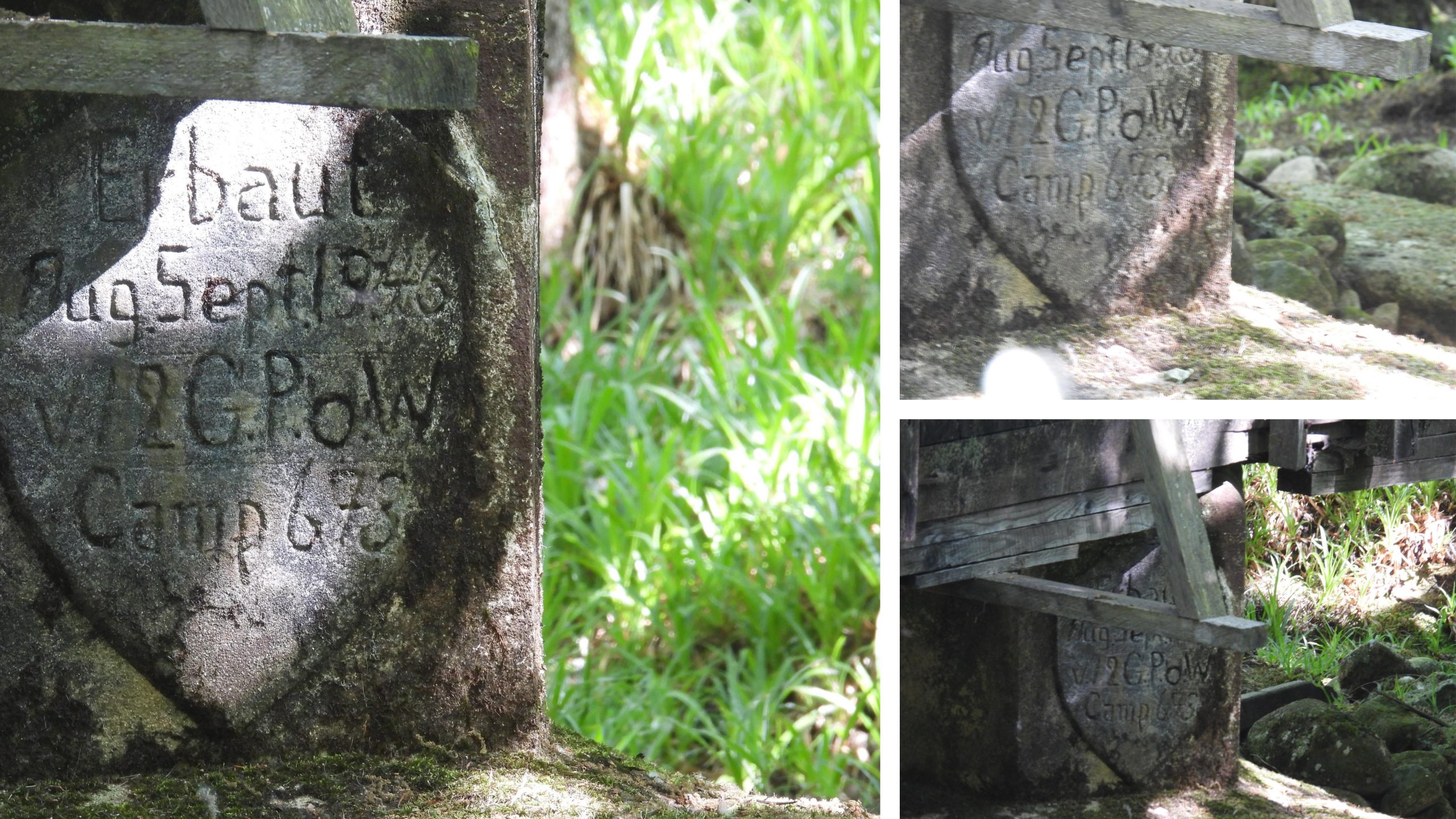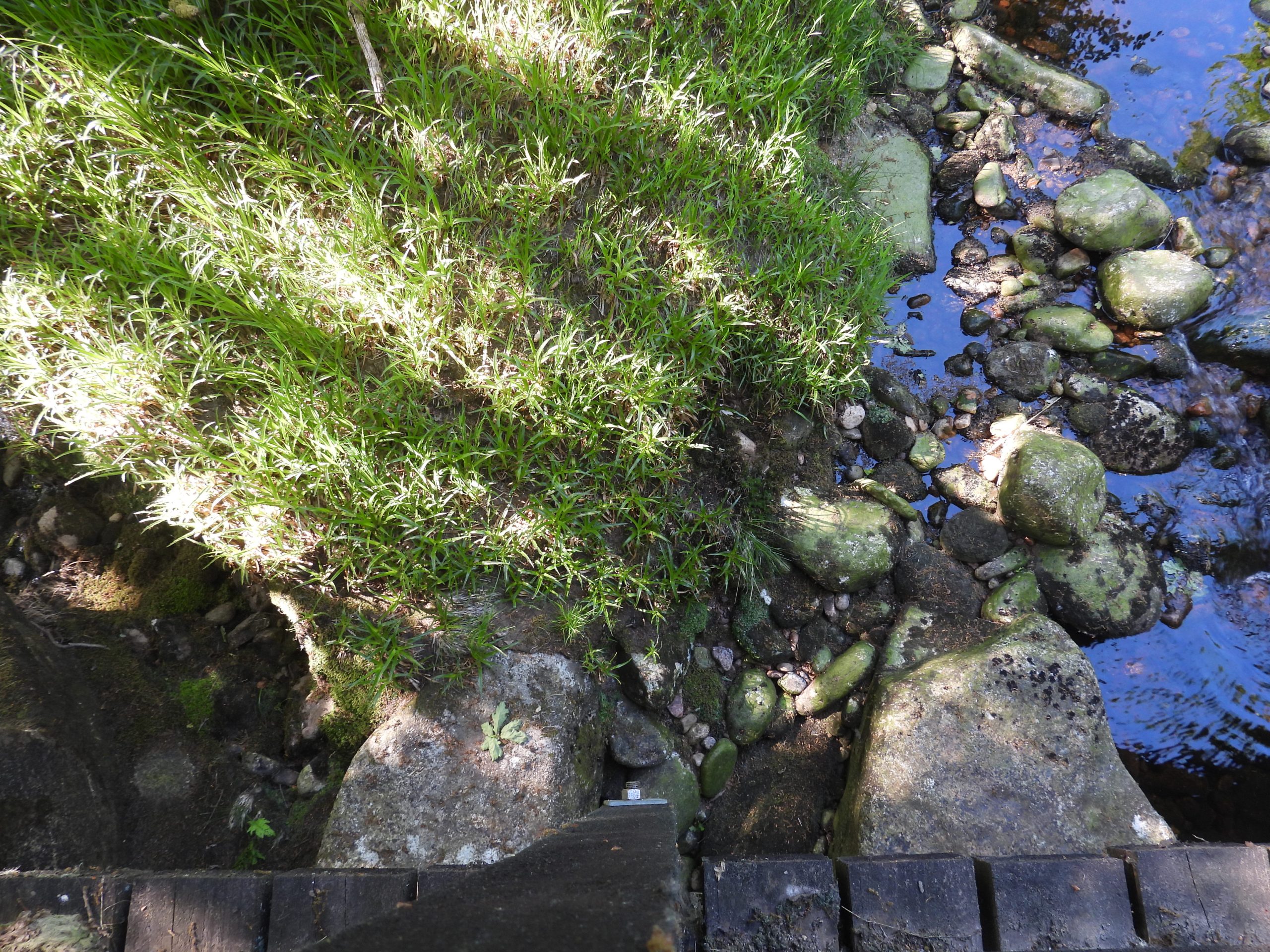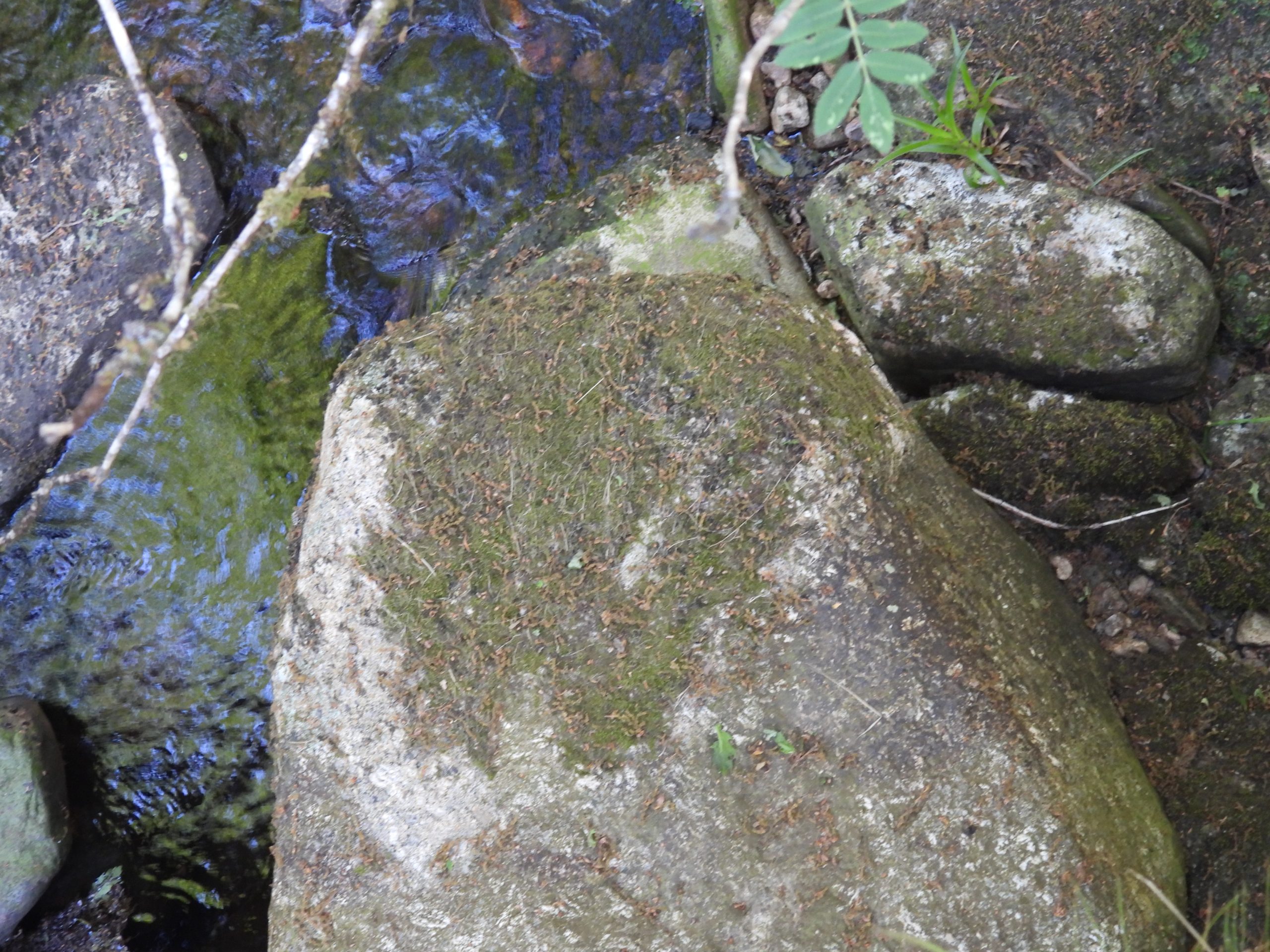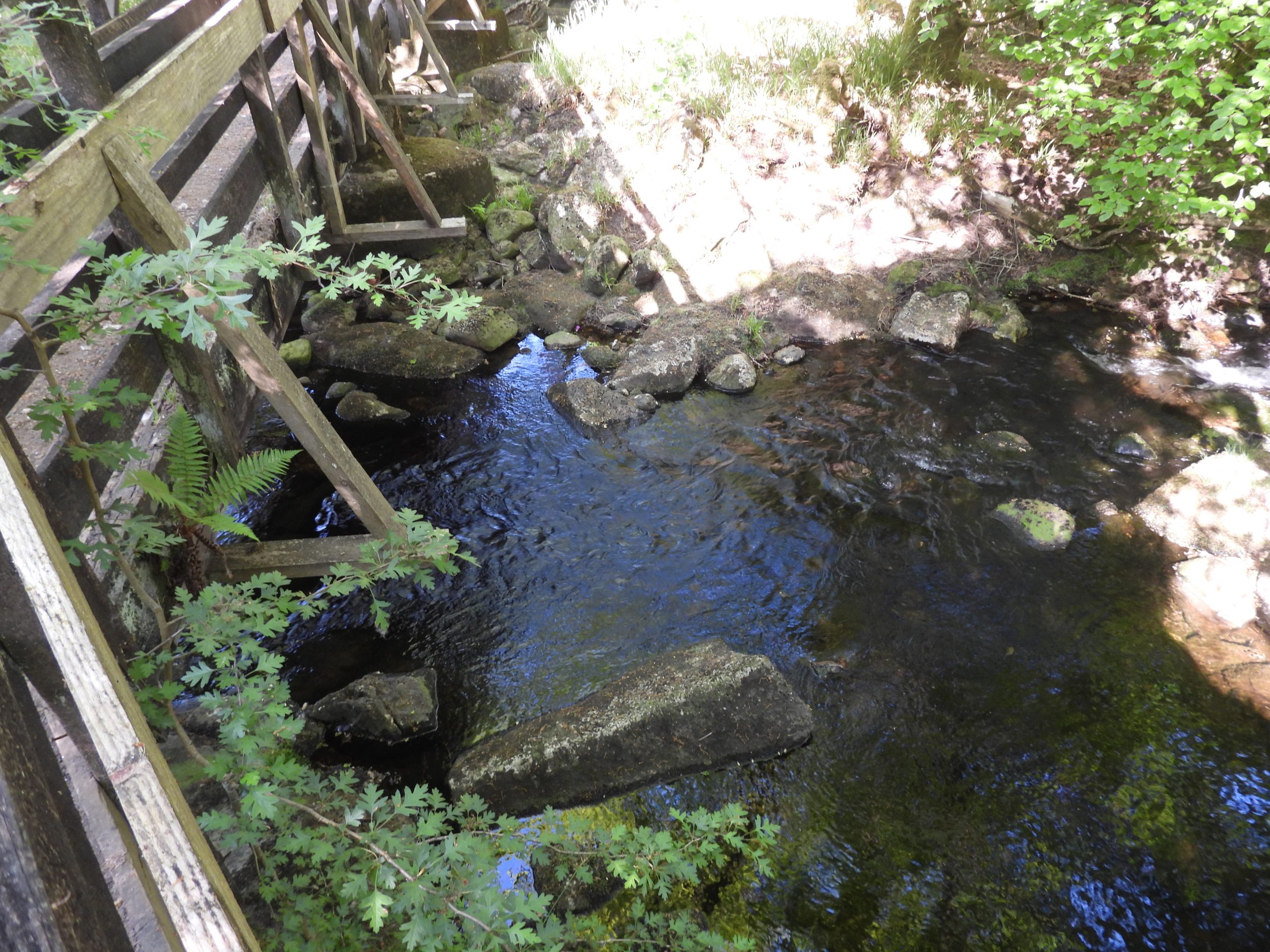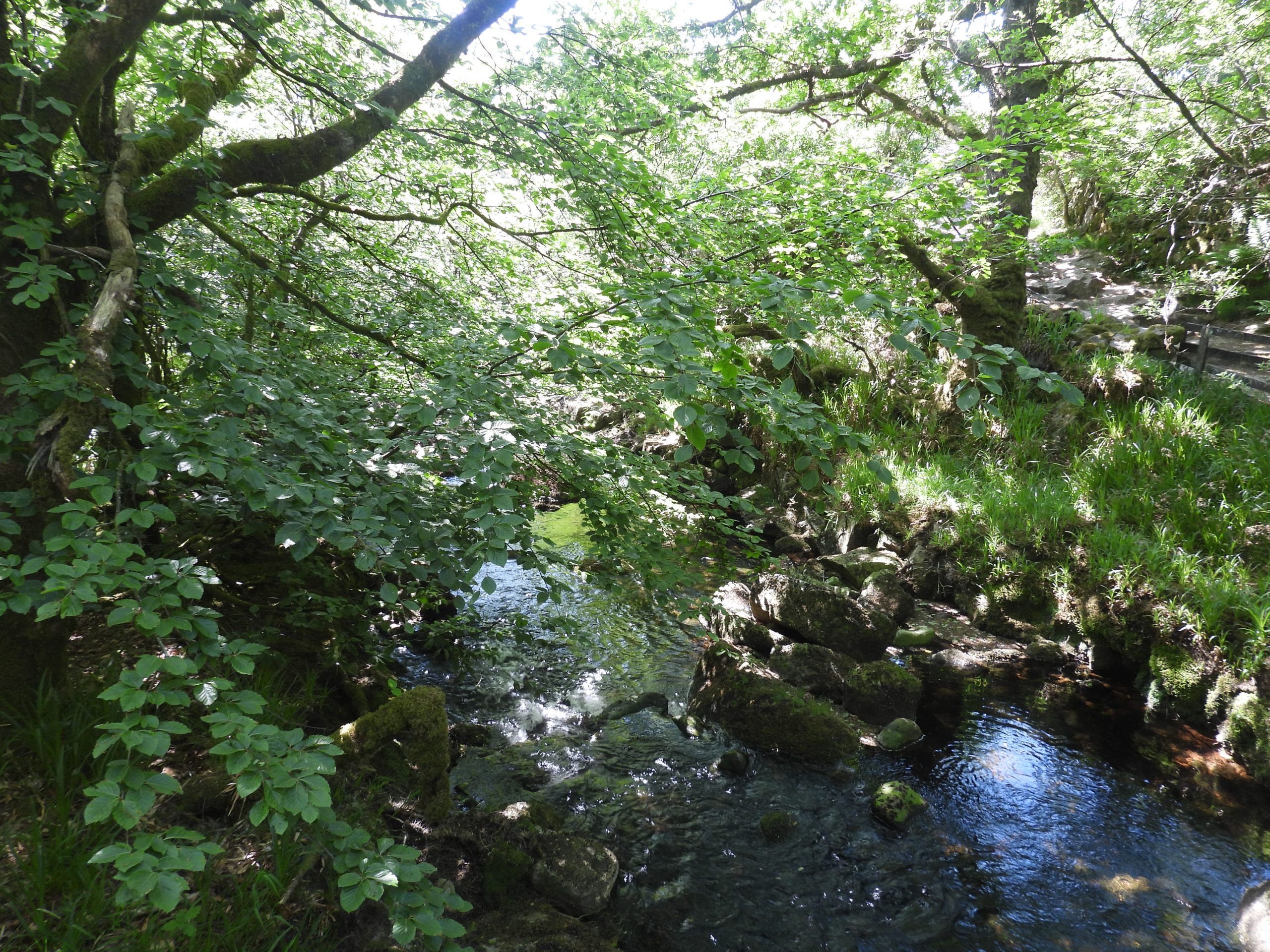The historical Standon Steps (stepping stones) were located on the Lych Way, just down from Willsworthy along a rocky lane, as one of three possible crossing points of the Tavy; the other two locations for crossing the Tavy were Hill Bridge (if the river was in spate) and Cataloo Steps. Eric Hemery records in ‘High Dartmoor’ (page 947) that : “The alarming rapidity and volume of the Tavy (prior to the depletion by the large-capacity mine leat) was the motive in laying down the immense stepping-stones unique in the Dartmoor country”. He further describes that the stepping-stones needed to be of sufficient width to allow corpse-bearers to cross abreast as opposed to fore and aft.
Today, the stepping stones are difficult to discern as a footbridge has been built on top of them. The build was carried out in August / September 1946 by German Prisoners of War, who held near Bridestowe. The date of the build is recorded on the central pillar of the footbridge which still can be seen today. The bridge was erected for Jack Evans of Standon, who was a range clearer for the Willsworthy range, because the river level was often too high to be provide safe passage for both horse and rider. The bridge was later rebuilt by the Ministry of Defence.
